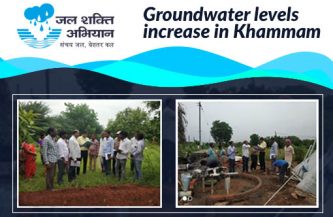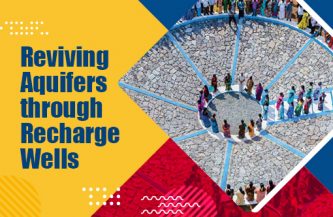Chidambaram town lake restoration project gets underway

In a unique effort to revive and reclaim traditional water conservation structures, Cuddalore district administration has initiated a multi-stakeholder, community-led effort to clean up and restore all the water bodies.

The ancient town of Chidambaram in Cuddalore district of Tamil Nadu is blessed with a large number of lakes and ponds. In total, there are 15 lakes, including 3 temple tanks and the combined surface areas of these lakes is around 100 acres with a rough storage capacity of 50 crore litres.
The names of the tanks are: Vannan Kulam, Easwaran Kulam, Aanai Mettu Kulam, Nagachery Tank, Periya Anna Kulam, Gnanaprakasam, Ayikulam, Kumarankullam, Palamankulam, Thatchana Kulam, Ommakulam, Thillai Amman Koil Kulam, Elamai Akkinar Kulam, Kariaperumal Kulam, and Chinna Anna Kulam.
All these tanks have traditionally been major sources of water with a rich history, carrying religious significance. Over the years, however, these water bodies have been subjected to siltation, pollution and encroachment.
To address this, a comprehensive, community driven, multi-stakeholder lake restoration project has been planned for Chidambaram city of Cuddalore District.
In the first phase, the following ponds are being taken up for restoration – Ayee Kulam, Gnanaprakasam Kulam, Omakulam, Nagachery Kulam, Kumaran Kulam. The rejuvenation work will be comprehensive and end to end to prevent future degradation.
Activities being carried out in this regard are:

Removal of encroachments: Roughly 400 structural encroachments of houses/shops have been identified near the tanks along the boundaries, the encroachments having existed for over 3 decades. Owing to the efforts of the district administration, in August 2019, 125 encroachments of the total 400 have already been removed in Gnanaprakasm and Nagachery Kulam and further removals are being planned. The Slum Board has given permanent houses adjacent to the town for encroachers.
Removal of Garbage: All garbage in the form of weeds, paper, plastic and other waste matter has been removed by volunteers, citizens and district officials through shramdan.
Desiltation and strengthening of bunds: The district administration is organizing machinery to desilt the tanks and strengthen bunds bordering the tanks.
Once desiltation is complete; the following works will be taken up:
• Creation of water harvesting structures within the water bodies so as to optimise water storage and ground water recharge
• Plantation of saplings along the bund – to hold the soil on the bund together, while providing a natural barrier to protect the lakes
• Fencing – to prevent any future encroachment along the lakes

Community engagement: All work of rejuvenating tanks is planned with full involvement of the community to instill a sense of ownership and to ensure sustainability. An option for providing financial support has been given through crowd funding on the online platform Ketto. So far, Rs. 2 lakh has been collected in this regard.
Other community activities planned in the coming months are: large scale paintings in public places for awareness regarding water conservation; water conservation fellowships for college students; participation of NSS, NCC, Red Cross students in cleanups; and creation of informal user associations with local residents for sustainable management and prevention of degradation after restoration work is completed.
Expected outcome: The project is expected to create additional water storage capacity and recharge drying aquifers for a city facing the dual problem of water stress and heavy flooding. Although the current average water demand in the town is 8.4 MLD (million litres per day) for a population of 62153, the average water supply is only 3.9 MLD. Ground water availability for potable drinking water is at 200m below ground level. Hence the entire city is identified as very highly vulnerable to flooding by Tamil Nadu State Disaster Management Authority (TN SDMA).

[NOTE: The Blog was first published on https://jalshakti.wordpress.com]





